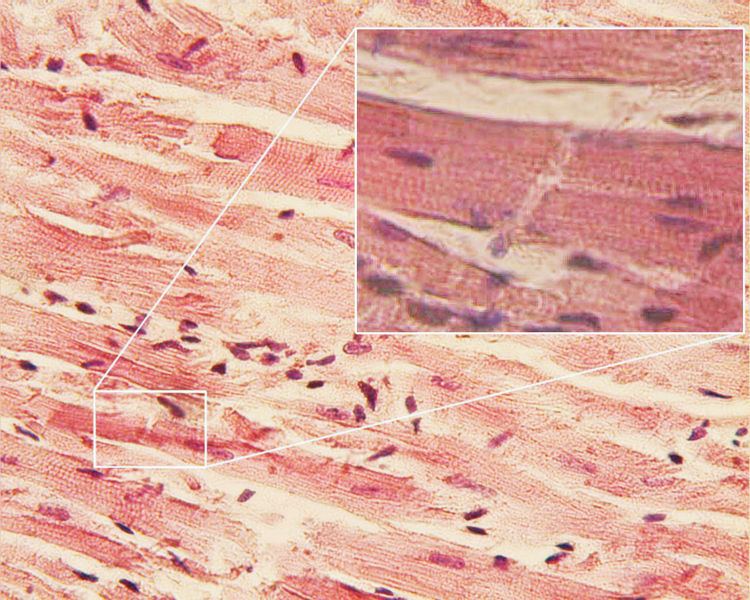Code TH H2.00.05.2.02006 | ||
 | ||
Latin Discus intercalaris, discus intercalatus | ||
Intercalated discs are microscopic identifying features of cardiac muscle. Cardiac muscle consists of individual heart muscle cells (cardiomyocytes) connected by intercalated discs to work as a single functional organ or syncytium. By contrast, skeletal muscle consists of multinucleated muscle fibers and exhibit no intercalated discs. Intercalated discs support synchronized contraction of cardiac tissue. They occur at the Z line of the sarcomere and can be visualized easily when observing a longitudinal section of the tissue.
Three types of cell junction make up an intercalated disc — fascia adherens, desmosomes and gap junctions.
Molecular, biological, and comprehensive studies have shown that intercalated discs consist for the most part of mixed type adherens junctions, termed composite junctions or areae compositae (singular area composita). These represent an amalgamation of typical desmosomal and fascia adherens proteins (in contrast to various epithelia). Thus cardiomyocyte adherens junctions differ from epithelial adherens junctions and desmosomes.
